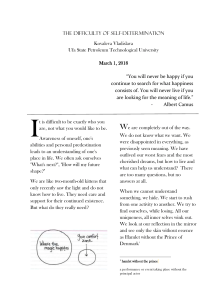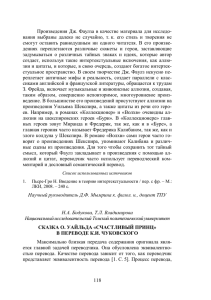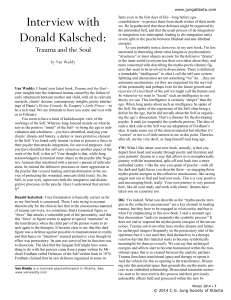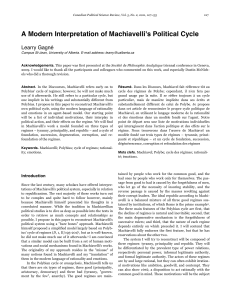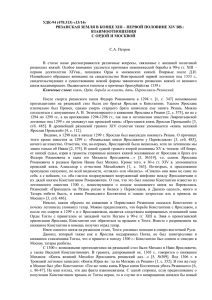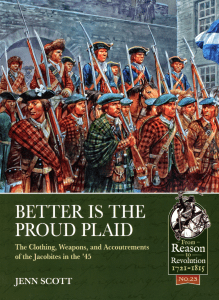Документ 2036187
реклама
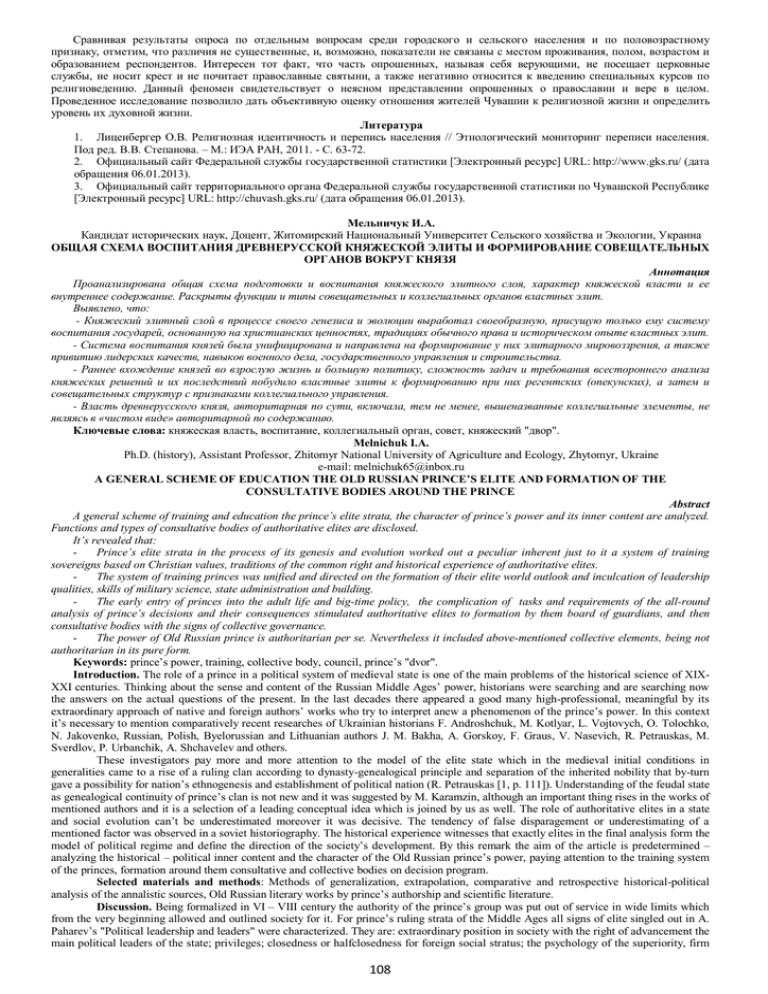
Сравнивая результаты опроса по отдельным вопросам среди городского и сельского населения и по половозрастному признаку, отметим, что различия не существенные, и, возможно, показатели не связаны с местом проживания, полом, возрастом и образованием респондентов. Интересен тот факт, что часть опрошенных, называя себя верующими, не посещает церковные службы, не носит крест и не почитает православные святыни, а также негативно относится к введению специальных курсов по религиоведению. Данный феномен свидетельствует о неясном представлении опрошенных о православии и вере в целом. Проведенное исследование позволило дать объективную оценку отношения жителей Чувашии к религиозной жизни и определить уровень их духовной жизни. Литература 1. Лиценбергер О.В. Религиозная идентичность и перепись населения // Этнологический мониторинг переписи населения. Под ред. В.В. Степанова. – М.: ИЭА РАН, 2011. - С. 63-72. 2. Официальный сайт Федеральной службы государственной статистики [Электронный ресурс] URL: http://www.gks.ru/ (дата обращения 06.01.2013). 3. Официальный сайт территориального органа Федеральной службы государственной статистики по Чувашской Республике [Электронный ресурс] URL: http://chuvash.gks.ru/ (дата обращения 06.01.2013). Мельничук И.А. Кандидат исторических наук, Доцент, Житомирский Национальный Университет Сельского хозяйства и Экологии, Украина ОБЩАЯ СХЕМА ВОСПИТАНИЯ ДРЕВНЕРУССКОЙ КНЯЖЕСКОЙ ЭЛИТЫ И ФОРМИРОВАНИЕ СОВЕЩАТЕЛЬНЫХ ОРГАНОВ ВОКРУГ КНЯЗЯ Аннотация Проанализирована общая схема подготовки и воспитания княжеского элитного слоя, характер княжеской власти и ее внутреннее содержание. Раскрыты функции и типы совещательных и коллегиальных органов властных элит. Выявлено, что: - Княжеский элитный слой в процессе своего генезиса и эволюции выработал своеобразную, присущую только ему систему воспитания государей, основанную на христианских ценностях, традициях обычного права и историческом опыте властных элит. - Система воспитания князей была унифицирована и направлена на формирование у них элитарного мировоззрения, а также привитию лидерских качеств, навыков военного дела, государственного управления и строительства. - Раннее вхождение князей во взрослую жизнь и большую политику, сложность задач и требования всестороннего анализа княжеских решений и их последствий побудило властные элиты к формированию при них регентских (опекунских), а затем и совещательных структур с признаками коллегиального управления. - Власть древнерусского князя, авторитарная по сути, включала, тем не менее, вышеназванные коллегиальные элементы, не являясь в «чистом виде» авторитарной по содержанию. Ключевые слова: княжеская власть, воспитание, коллегиальный орган, совет, княжеский "двор". Melnichuk I.A. Ph.D. (history), Assistant Professor, Zhіtomyr National University of Agriculture and Ecology, Zhytomyr, Ukraine e-mail: melnichuk65@inbox.ru A GENERAL SCHEME OF EDUCATION THE OLD RUSSIAN PRINCE’S ELITE AND FORMATION OF THE CONSULTATIVE BODIES AROUND THE PRINCE Abstract A general scheme of training and education the prince’s elite strata, the character of prince’s power and its inner content are analyzed. Functions and types of consultative bodies of authoritative elites are disclosed. It’s revealed that: Prince’s elite strata in the process of its genesis and evolution worked out a peculiar inherent just to it a system of training sovereigns based on Christian values, traditions of the common right and historical experience of authoritative elites. The system of training princes was unified and directed on the formation of their elite world outlook and inculcation of leadership qualities, skills of military science, state administration and building. The early entry of princes into the adult life and big-time policy, the complication of tasks and requirements of the all-round analysis of prince’s decisions and their consequences stimulated authoritative elites to formation by them board of guardians, and then consultative bodies with the signs of collective governance. The power of Old Russian prince is authoritarian per se. Nevertheless it included above-mentioned collective elements, being not authoritarian in its pure form. Keywords: prince’s power, training, collective body, council, prince’s "dvor". Introduction. The role of a prince in a political system of medieval state is one of the main problems of the historical science of XIXXXI centuries. Thinking about the sense and content of the Russian Middle Ages’ power, historians were searching and are searching now the answers on the actual questions of the present. In the last decades there appeared a good many high-professional, meaningful by its extraordinary approach of native and foreign authors’ works who try to interpret anew a phenomenon of the prince’s power. In this context it’s necessary to mention comparatively recent researches of Ukrainian historians F. Androshchuk, M. Kotlyar, L. Vojtovych, O. Tolochko, N. Jakovenko, Russian, Polish, Byelorussian and Lithuanian authors J. M. Bakha, A. Gorskoy, F. Graus, V. Nasevich, R. Petrauskas, M. Sverdlov, P. Urbanchik, A. Shchavelev and others. These investigators pay more and more attention to the model of the elite state which in the medieval initial conditions in generalities came to a rise of a ruling clan according to dynasty-genealogical principle and separation of the inherited nobility that by-turn gave a possibility for nation’s ethnogenesis and establishment of political nation (R. Petrauskas [1, p. 111]). Understanding of the feudal state as genealogical continuity of prince’s clan is not new and it was suggested by M. Karamzin, although an important thing rises in the works of mentioned authors and it is a selection of a leading conceptual idea which is joined by us as well. The role of authoritative elites in a state and social evolution can’t be underestimated moreover it was decisive. The tendency of false disparagement or underestimating of a mentioned factor was observed in a soviet historiography. The historical experience witnesses that exactly elites in the final analysis form the model of political regime and define the direction of the society’s development. By this remark the aim of the article is predetermined – analyzing the historical – political inner content and the character of the Old Russian prince’s power, paying attention to the training system of the princes, formation around them consultative and collective bodies on decision program. Selected materials and methods: Methods of generalization, extrapolation, comparative and retrospective historical-political analysis of the annalistic sources, Old Russian literary works by prince’s authorship and scientific literature. Discussion. Being formalized in VI – VIII century the authority of the prince’s group was put out of service in wide limits which from the very beginning allowed and outlined society for it. For prince’s ruling strata of the Middle Ages all signs of elite singled out in A. Paharev’s "Political leadership and leaders" were characterized. They are: extraordinary position in society with the right of advancement the main political leaders of the state; privileges; closedness or halfclosedness for foreign social stratus; the psychology of the superiority, firm 108 convictions; own ideology; access to restricted information and high culture; ability of self-sacrifice for the sake of preservation of authority [2]. With the finishing of the final execution process of the first prince’s dynasties this narrow enough strata of the political elites acts as a caste of the selected which perfectly realizes its exclusive abilities, scale of power and responsibility connected with it. From early childhood the prince was brought up as a soldier, not only in heroic imitation of his parents and grandfathers (L. Voytovich admits that each of them knew the history of his nation in details and to be good at not only genealogy of authoritative dynasties of Rus and Europe [3]), but biblical and ancient patterns – from David and Solomon to Makedonsky and Caesar. The best but few patterns of ancient literature were translated by orthodox scribers and were kept in prince’s libraries. There it’s worth mentioning the heritage of St. Methodius and St. Cyril not without the influence of Byzantine education but also by their own wish, and successors of their ascetical and educational activities (unlike the Catholic ideologists, who declared ancient world as "barbarous"), understood the civilizing meaning of the ancient thought. Starting from the choice of a special, "prince’s" name [4], and ending by the atmosphere of solemn ritualism and ceremonialism, which cloaked the activities [5, p.5-9; 6, p.882-892], the decision and even the business lexis of princes (for example during conducting the prince’s "snemov") [7, p.276], sovereign was like in the cocoon of elitism and elitism that inculcated to this strata the psychology of superiority and unique ethics, connected with awareness o9f the value of each his step. The prince from his youth up was trained not only to acceptance on the conscious level his exceptional position, but also to hard realities of medieval ruling elite’s life – physically and emotionally exhausting military campaign and teaching of fair law, punitive and annexationist operations, cruel intestine collisions. Parents, "dyadki", guardians’ teachers from among higher armed forces and boyars were those who taught. All these shares were generously poured with blood, that’s why a prince was not afraid and was ready to accept loss of relatives and nearest people. On the fundamental level the terms of honour and responsibility of authoritarian elite in front of God, masses and prince himself, holiness of prince’s oath – "Khrestnoe celovanie " were inculcated to the young legatee of prince’s table. Nobody would say about it better than a prince himself. Vladimir Monomah in his policy speech “Nastavlenie potomkam” bid to the future sovereigns:"Most of all don’t forget the poor but feed them so much as you can and give alms to orphan and justify a widow and don’t let strong to kill a man. Don’t kill a right or rong person and don’t command to kill him; if he deserves death, don’t kill any orthodox soul. Saying anything bad or good don’t swear on God, don’t cross yourself, there is no need in it. If you kiss a cross of fraternity or another one, checking your heart, stand on what you can and kiss and having given a kiss, hold the opinion in order not to destroy a soul after breaking it…Most of all don’t have pride in your heart and mind, but let’s say: we are mortal, today are alive, tomorrow are dead; all you have given to us – is not ours but yours, entrusted us for a short period of time" [8]. The term of honour, justice, inviolability of prince’s word were sacred, basic postulates in the system of teaching prince’s elite strata. Another thing is that having grown princes became dependent on the current political and dynastic situation and questions of physical and political survival. In these conditions some of them used Machiavellian principles of realization of power. The princes rarely learned the necessity of creation their own image in masses, formation of their own lobby from the members of all those times elites both authoritative and not ruling: boyar’s ruling top, the head of the church, city’s statesmen, merchants, and not only in the limits of their patrimony. With the technologies of the political lobbyism, diplomacy and formation of own groups of influence and pressure at courts of other sovereigns and dynastic conjugal politics the prince learned the rudiments of economics and law, fortification and town building, knew handicrafts and trades, learned languages, religious and society literature. Life in struggle, military practice and literature taught the prince rhetoric and logics, developed leadership qualities and courage. That’s why practically each prince is capable to be at the head of military campaign and to write a reasonable letter, to hold if it’s necessary a sitting of the court on the high professional level, a meeting inner political purge or a complicated foreign-policy scheme, to issue an appeal to the army or popular assembly, to initiate if needs feasts or street festivities or to appeal for mass consciousness to a heroic deed and self-sacrifice in the name of Motherland. For all that princes were common people with their own set of weaknesses and flaws, peculiarities of psyche and emotional potentiality, different in the scale of talents and inherent qualities. Though princes were trained according to a single scheme, but under different initial conditions and in different environment. That’s why as each social strata prince’s elite strata has its losers and lucky men, squanderers and ascetics; at the side of power usurpers and destroyers of political system there were princes-reformers and writers, heroes with hard character and deep conformists, but as often as not in the bulk just professional administrators and commanders. Just a few from them were included in textbooks and reading books, but just the latest of major genealogical works – monographs by L. Voytovich [3, p.197-592] and E. Pchelov [9], include more than three hundred names and references about the princes of Rurik dynasty of pre-Mongolian period in the male line, and each of them during the given by the fate time contributed his less or bigger mite in rotation of a wheel of History. In the native medieval practice not rare were the cases when the prince’s table was occupied by young people: Svyatoslav began the battle with "drevlyane" when he was four [10, p.28], he left his son Yaropolk to reign in Kyev when he was just ten [3, p.227]; Vladimir had to take Novgorod in 970 when he was near 7 years old [3, p.234]; Yaroslav Vladimirovich (Mudryi) came to Rostovsky throne when he was 7 [3, p.257]; Izyaslav Vladimirovich was sent to Polock when he was ten [3, p.247], Mstislav Vladimirovich began to reign in Novgorod when he was fourteen-fifteen years old [11, p.18], Danilo Halitsky with the help of his late father’s boyars was included in the battle for Halitsky stol in the age of ten and so on. Of course before prince’s maturation and marriage he was looked after by his mother: Olga was a regent in the time of Svyatoslav, Rogneda – in the time of Izyaslav, Anna – in the time of Daniel and Vasilko Romanovich; spiritual leaders, voivodes, teachers – "dyadki" were also close to them: Svyatopolk and Asmund at Svyatoslav, Dobrynya is at Vladimir. Konstantin, Dobrynya’s son was the main advisor of Yaroslav in Novgorod. These politics essentially influenced not only the formation of world outlook of the princes, but the state business. Talking about the relations between Vladimir and his sons L. Voytovich is of a low opinion about this practice: "Vladimir had considerable problems with his sons. Upbrought by different mothers they rarely saw and loved their father. Sent to their independent principality since their childhood they were influenced by local circles and didn’t refer to Kyev" [3, p.243] (transl.auth). The authors of the " Tales of Bygone Years" had a not favorable attitude to young princes:"…A trouble was with that town where the prince was young and likes to drink wine to the sound of psaltery with young advisors. God gives those princes for sins, but takes old and wise away" [10, p.62]. On the other hand, these children became adults very early and at the age of seventeen-twenty five young princes in their majority were able to manage great affairs – Izyaslav before his early death had time to Christianize Polockaya land and to rebuild the town Polock [2, p.247], Svyatoslav succeed in going to Bulgaria, Daniel and Vasilko Romanovichi according to Halitsko-Volynskaya chronicle at the age of seventeen-eighteen faught with Tatars on the Kalka River [11, p.345; 12, p.492], Vladimir Monomah relying on his words started his active prince’s activities since thirteen years, making trips and hunting. Considering his father, prince of Kyev Vsevolod’s wish he went to govern in Rostov [13, p.613], then he was the head of father’s armed force and when he was 23 he became the prince of Smolensk etc. Irrespective of the age the prince remained a political figure not just formally but actually was the leader among people who were around him. After coming of age he could lead any person in the princedom. Let’s remember that there were always "best people" next to the prince: a medieval prince and his armed force with the rare exceptions were incorporated and were the ruling military-political elite of the state. Meetings of a prince and senior armed force were an established practice of the elite from the very moment of its origin in VI century. Vladimir relying on the European example started to accustom the city elders ("myzhey gradskih") to the participation in the prince’s Council (Duma) and not regularly the church elite. Later with the appearance of the landocracy, an influential voting authority on the 109 Councils was given to first-rate boyars. Surely the prince’s Council wasn’t class-representative body of power per se and it was gathered as appropriate. Besides Duma, under the prince there acted an "inner circle" which consisted of the number of advisors for efficient consultations and implementation of important, often secret assignments. The researchers limit this informal consultative-executive body to prince’s relatives who were by him, junior princes, superior administrators, voivodes, millenaries, sometimes authorized sotniks, calling them "the prince’s weapon", "inner circle", more often – "prince’s court". It was the court who constructed foreign and internal policy, here with involving educated scribes the ideology of chronicles was forming and legal documents were prepared, numerous political, economic, dynastic and religious interests were lobbied, private affairs were worked out. If the Council by the prince was able to decide the issues of war and peace on the official level and to discuss dynastic collisions and legal problems right up to exclusive cases of princes’ guilt, to assert strategies and estimates, the prince’s court would take care of daily tactic tasks. Surely that like in any other another monarchy it was the prince whom belonged the generation of the majority of ideas and projects, and whose word was the last. On the later period when in XI-XII century the senior armed force (boyares) got patrimonial shares the term "prince’s court" had some another sounding: in this period it consisted of service staff of a prince and junior armed force (hence started its genesis the noble strata) and resisted in the fight for power and influence to the major boyars. An interesting statistics concerning the quantity of the prince’s meetings and their agenda is suggested by A. Gorskiy: "Altogether there exist 67 reports about the prince’s meetings with the persons of another social position in X-II century. Sixty two of them informs about the concrete facts of such meetings. The highest number of information concern the war and peace council, foreign policy (41 – auth.). …On the second place are the questions throne inheritance and prince’s tables placement – 10. Five reports points to the meetings on religious topics, four – to the facts of the council on the questions of law. Two records of the council are connected with the laying the accusation against princes, besides, 4 records say in general about the prince’s custom to "think" with the armed force , and one (XII century) – with frequent meetings with bishops on the religious questions. Finally in three records (XII century) members of Duma are mentioned " [14, p.61-62]. A. Gorskiy is fully right thinking that in the chronicles were mentioned not all the meetings but just those which touched the events, which scribers decided to fix and the growth of the number of records about the prince’s Duma in XII century and it can be explained by the increase of the quantity of acting persons-princes in the period of political atomism of Rus and the presence of a big quantity of records. But some records (three records about members of Duma, the record in "Nastavlenie" by Monomah about the fact that he… "nearly forty times went to his father" (Vsevolod the Great prince of Kyev) from Chernigov to Kyev [1, p.462]), tell that the prince’s Counsil (Duma) gathered on continuing thought not regularly basis and the structure of it wasn’t rather stable. Results. Proceeding from the above mentioned we can make certain conclusions: Prince’s elite strata in the process of its genesis and evolution worked out a peculiar inherent just to it a system of training sovereigns based on Christian values, traditions of the common right and historical experience of authoritative elites. The system of training princes was unified and directed on the formation of their elite world outlook and inculcation of leadership qualities, skills of military science, state administration and building. The early entry of princes into the adult life and big-time policy, the complication of tasks and requirements of the all-round analysis of prince’s decisions and their consequences stimulated authoritative elites to formation by them board of guardians, and then consultative bodies with the signs of collective governance and working out the algorithm of the authority’s actions. The line of these structures formed as far as the prince grew up and the political system became more complicated in such a way: the guardian Council, where the future sovereign’s mother and sometimes the nearest relatives, educators and the advisors from the number of senior armed force (boyarstva) – The Council under the prince – The prince’s court were included. In special cases the prince could be based on the decisions of foreign collective bodies – popular assembly and the prince’s "snema" (congress of princes). The power of Old Rus princes is authoritarian itself and nevertheless it included mentioned above collective elements being not per se authoritarian by its content. On the other hand no one collective body which functioned by the prince didn’t make decisions limiting to curatorial, analytical and consultative functions. Any representative from these structures could implement authoritative power usually did it (preparation, experience and belonging to political elites allowed), although either in the name of the prince or by his order. Conclusion. In the issue of well thought-out scheme of training and further functioning of prince’s authoritarian elite it succeeded in working out a conservative, based on the Christian values and time-tested common traditions succession and electivity, but at the same time rather flexible model of training personnel and governance, which permitted and took into account the influence and opinion of the representatives of other elite groups. The consultative vote of these groups – the nearest relatives, boyars, armed forces, later hierarchs of the church, town elders was important and helpful to both sides. This allowed the prince’s elite to remain ruling for centuries, acting both on the external and internal political field. Global cataclysms – regional separatism, activities of the princes "pariahs" , political atomism, Mongolian invasion, further fight for domination between the strongest principalities, - led to crises of the prince’s power of different depth, but didn’t ruin it. Crises were overcome at the expense of modification of the political system, keeping prince’s elite estate at the top of authoritative pyramid. Литература 1. Petrauskas R. Rulling generation and nobility: to the question of preconditions of education of Lithuaian state. / R. Petrauskas. // St. Petersburgh’s and Balkan researches. № 1 (11). January-June 2012. P. 95-116 2. Paharev A. D. The political leadership and leaders: Monograph – K.: Knowledge of Ukraine, 2001. 270 р. 3. Voytovich L. V. Prince’s epoch in Rus: The portraits of elit. Bila Cerckva.: NAN of Ukraine, The Institute of Ukraine studies named after I. Krypjakevycha. Lviv national university named after Ivan Franko, 2006. 784p. 4. Litvina A. F., Uspenskyi F. B. The choice of the Russian princes’ name in X – XVI centuries: The dynastic history in the light of anthroponomics. M. : Indrik, 2006. 908p. 5. Androshchuk F. To the history of the inthronization ceremony of the Russian princes «sydinnya na kurganah» / F. Androshchuk // Armed force’s antiquities in the Central-eastern Europe in VIII –XII centuries. The Materials of the field archeological seminar. Chernigiv, 2003. P. 5-9 6. Petruhin V. Y. To pre-Christian sources of Old Russian prince’s cult. / V. Y Petruhin // Politropon. To the seventy’s anniversary of N. V. Toropov. M., 1998. P.882-892 7. Shcavelev A. S. The princes’ congress as a political institution of Old Rus./ A. S. Shcavelev // Ancient states of the eastern Europe. M.: Publishing house «Eastern literature» RAN, 2006. P.271-276 8. Works of Vladimir Monomah. Sermons to descendants / Preface, commentaries and translation by A. Y. Karpov. / Karpov A. Y. The grand prince Vladimir Monomah. M.: Russkiy mir, 2006. 512p. 9. Pchelov E. V. The genealogy of Old Russian princes of IX – the beginning of XI cent. / Otv. Red. O. M. Medushevskaya. Moscow: Russian state humanitarian university, 2001. 262p. 10. Tales of Bygone Years. Prep. Of the text, transl., st. and comment. of D. S. Lihacheva / under the editorship of V. P. AdrianovaPeretc; 2nd edition, corrected and added. SPb. : Nauka, 1996. 668p. 11. Kruglova T. V. About the terms of Novgorod reigning of Mstislav the Great. / T. V. Kruglova // Old Rus. The questions of medieval history. 2007. №1 (27). P. 15-20 110 12. Grushevsky M. S. The History of Ukraine-Rus. V.2. Lviv, 1905. 634p. (second ed.) 13. Russian chronicle. / Transl. from Old Russian by L. E. Mahnovcya: accord. to ed. of O. V. Myshanych. K.: Dnipro, 1989. 590p. 14. Gorskyi A. A. Old Russian armed force (To the history of class society and government genesis in Rus)/ M.: «Prometey» MSPU named after V. I. Lenin, 1989. 124p. Орлов П.А. Кандидат исторических наук, доцент, Южно-Уральский государственный университет ПОКАЗАТЕЛИ СИСТЕМЫ ГОРНОЗАВОДСКИХ ТОВАРИЩЕСТВ НА КАЗЕННЫХ ГОРНЫХ ЗАВОДАХ В ОЦЕНКАХ АВТОРОВ «ГОРНОГО ЖУРНАЛА» (ВТОРАЯ ПОЛОВИНА XIX – НАЧАЛО XX ВВ.) Аннотация «Горный журнал» представляется как важный источник о первых в истории Российской Империи опытах горного ведомства в развитии системы горнозаводских товариществ – организационной формы реализации дополнительных пенсионных гарантий отставным мастеровым и рабочим людям казенных горных заводов; исследуются публикации авторов, инспектировавших «действия» и показатели финансовой состоятельности товариществ. Ключевые слова: горное ведомство, «Горный журнал», горнозаводские товарищества. Orlov P.A. Ph.D. in History, assistant professor, South Ural State University THE INDIKATORS OF THE SISTEM OF MINING-WORKS ASSOCIATION AT THE STATE MOUNTAIN PLANTS IN ESTIMATES OF THE AUTHORS OF «MINING MAGAZINE» (SECOND HALF OF XIX – EARLY XX CENTURIES) Abstract «Mining Magazine» seems to be an important source of the first in the history of the Russian Empire of experiments of mining department in the development of system of Mining-works associations – the organizational form of implementation of additional pension guarantees for retired «plants muzhik in old age»; study of publication of authors who have inspected the «association's action» and the indicators of financial viability association. Keywords: Mining department, «Mining Magazine», Mining-works associations. Предусмотренные по «Высочайше утвержденному Положению о горнозаводском населении казённых горных заводов ведомства Министерства финансов» 8 марта 1861 г. [1] в качестве организационной формы реализации дополнительных пенсионных гарантий заводским людям, оставившим службу или работу по возрасту, увечью или болезни, за три десятилетия горнозаводские товарищества сложились в систему, охватившую основные центры казенного горнозаводского хозяйствования, – Кавказ, Урал, Забайкалье и Карелию [2]. Утверждение товариществ общественными [3], публично-правовыми (негосударственными) организациями с добровольным [4] (заявительным, но не явочным – !) порядком учреждения; элементы самоуправления в регламентации ими «собственных дел»; избегание форсирования темпов «согласования» каждого из шестнадцати (в общем итоге) [5] товариществ, – все эти их статусные особенности пришлись на период активного оформления практик пенсионного обеспечения государственных служащих империи [6] на страховых началах. Началах, чьи базовые правила составления «дополнительной к казенной», «отложенной», «личными трудами и службами созданной» компенсации (эмеритуры), всю вторую половину XIX в. более-менее последовательно воплощались в ряде гражданских ведомств (юстиции, почтово-телеграфном, железнодорожном, народного просвещения, экспедиции заготовления ценных бумаг, казенной продажи питей) и в земствах пятнадцати губерний [7]. Но именно «усилия на сей счет» в горном ведомстве, – из-за их хронологического первенства в отсутствии каких-либо отечественных [8] аналогов; и с учетом, что устраивались «пенсионные интересы» не только [9] высшей профессиональной части специалистов ведомства (горных инженеров), но и масс заводских мастеровых, – заслуживают исследовательского внимания, для раскрытия замысла которого отметим следующее. Представляется закономерным, что локализация системы товариществ в масштабах горно-металлургической отрасли [10], предопределила вовлечение в дискурс об их текущем и перспективном развитии, в первую очередь, – самих чиновников горного ведомства. А его скорому выходу за рамки сугубо бюрократического порядка обращения «отношений и мнений заводских, окружных и высших начальств и инстанций» в публичную сферу, немало способствовало наличие ведомственного периодического издания. «Горный журнал», официальное издание Горного ученого комитета, является не только первым значимым в истории России примером журнальной периодики гражданских министерств и ведомств; по выражению М. П. Мохначевой, он оказался и «самым живучим» – издаваемым с 1825 г. и до сих пор – старейшим ведомственным журналом [11]. Сохраняя и в пореформенное время качества уникальной отраслевой энциклопедии, «Горный журнал» концентрировал и образцово оперативно, – в условиях обширных расстояний империи и разнообразия провинциальной жизни горнозаводских округов и заводов, – представлял широкий спектр современных научных, технических, технологических, административноуправленческих, но также и знаний о «вообще» разного рода законных мерах, «полезных для благосостояния горнорабочего населения» [12]. Так что и опыты по образованию товариществ «в видах упрочения связи между заводами и работающими в оных людьми для поощрения сих последних к горному труду» [13], и дальнейшая конкретика исполнения товариществами повседневных полномочий, предсказуемо вывели на его страницы «своих» авторов. Все вышеупомянутое позволяет рассмотреть «историю успеха» системы горнозаводских товариществ глазами современников, связанных службой с ее реализацией и давших на страницы ведомственного журнала свои нетривиальные мнения о ней. При общей относительной немногочисленности публикаций «по товариществам» в интересующий нас пятидесятилетний период их развития (охвативший, к слову, троекратное [14] редактирование «Временного положения о вспомогательных кассах горнозаводских товариществ казенных горных заводов и рудников»), в содержательном плане состав сделанной нами выборки авторов «Горного журнала» [15] мы находим достаточно полным. В числе характерных особенностей этих материалов назовем: – по преимуществу, – слабое выражение, или полное игнорирование авторами вопросов теории корпоративных пенсионных учреждений и систем; – несколько утрированное описание «общественного благоустройства» и «вековых традиций касс для горнорабочих» в Бельгии, Австрии, Франции, Англии и государствах Германской империи [16]; – колеблющееся между лояльностью и предвзятостью, отношение к горнозаводским людям, «назначенным» объектом реализации «идеи товариществ» (а потому составлявшим весь контингент их участников и имевшим свое представительство в заведывании делами товариществ [17]); – стремление авторов излагать личную позицию («взгляд», в оценке М. П. Мохначевой) по отдельным разделам или пунктам (в том числе, даже и в политическом контексте); но без ссылок не только на более ранние публикации по теме в том же «Горном журнале», но и почти без упоминания персоналий; 111
